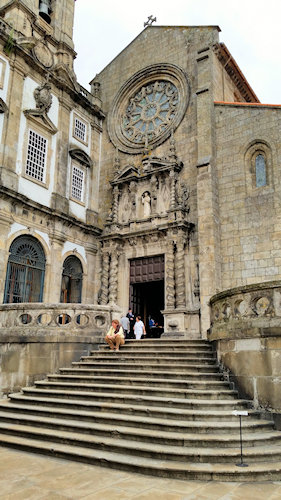

- The Church São Francisco (St. Francis) is the most prominent Gothic monument in Porto. It was
built by the Franciscans between 1383 and 1425 and has been declared World Heritage Site by UNESCO.
- L'église São Francisco (St-François) est le monument gothique le plus important de Porto. Elle a été
construite par les franciscains entre 1383 et 1425 et a été déclarée site du patrimoine mondial par l'UNESCO.
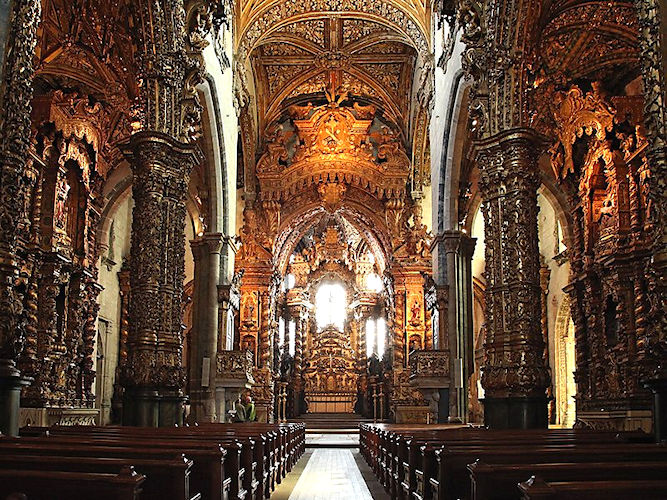

- The outstanding Baroque inner decoration of Church of St. Francis. The church has three naves coated in golden carvings. It is believed
that over 300 kilos of gold dust were used to decorate the interior. (It was forbidden to take pictures inside. This picture is from "travel.sygic.com").
- La décoration intérieure baroque exceptionnelle de l'église Saint-François. L'église a trois nefs recouvertes de sculptures dorées. On pense que plus de
300 kilos de poussière d'or ont été utilisés pour décorer l'intérieur. (Interdiction de potographier à l'intérieur, cette photo provient de « travel.sygic.com »)
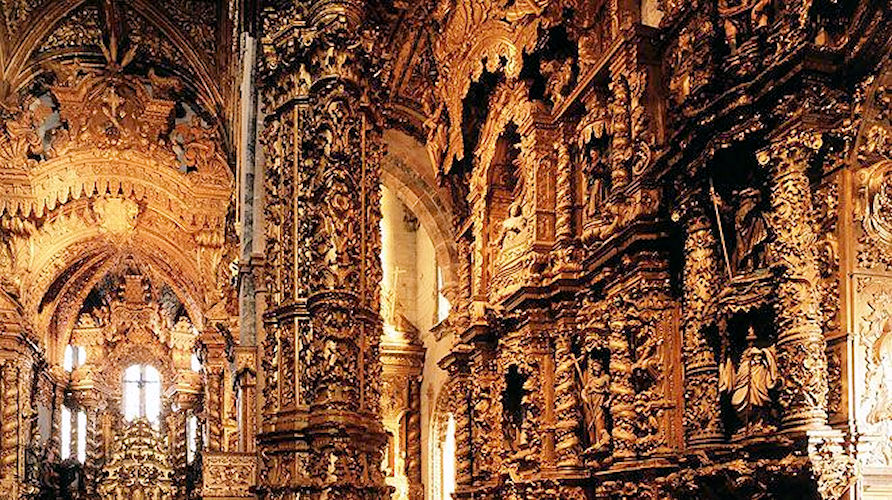

- The interior being considered too extravagant for the poverty that surrounded the church, so it was closed for a few years.
(It was forbidden to take pictures inside. This picture is from "visitportugal.com")
- L'intérieur étant considéré comme trop extravagant pour la pauvreté qui entourait l'église, elle a donc été fermée pendant
quelques années. (Interdiction de potographier à l'intérieur, cette photo provient de « visitportugal.com »)
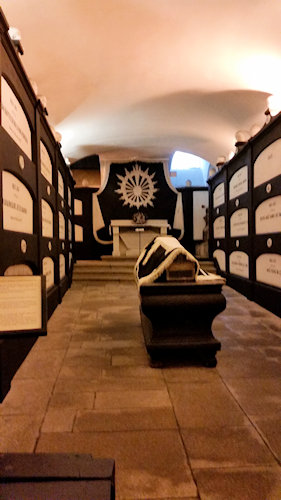

- The catacombs under the church, where Franciscan monks
and members of Porto’s wealthiest families are buried
- Les catacombes sous l'église, où sont enterrés les moines
franciscains et les membres des familles les plus riches de Porto
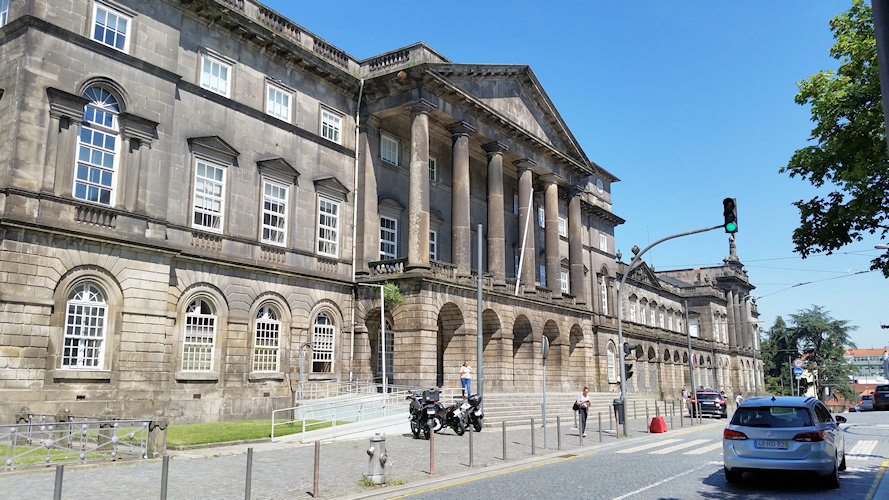

- The General Hospital of Santo António in Porto. Its construction started in 1770. The building has been classified as a National Monument since 1910.
- L'hôpital général de Santo António à Porto. Sa construction a débuté en 1770. L'édifice a été classé monument national depuis 1910.


- The Court House of Porto, inaugurated on 20 October 1961
- Le palais de justice de Porto, inauguré le 20 octobre 1961
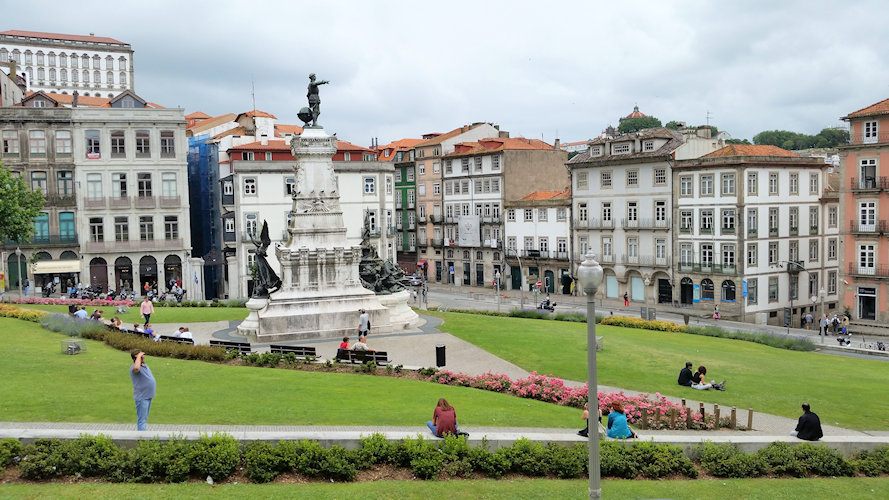

- The Infante D. Henrique Square in the historic center of Porto, with the statue of the Infante Henrique (Prince Henry the Navigator), which was erected in 1894
- La place Infante D. Henrique dans le centre historique de Porto, avec la statue de l'infant Henrique (prince Henri le navigateur), érigée en 1894
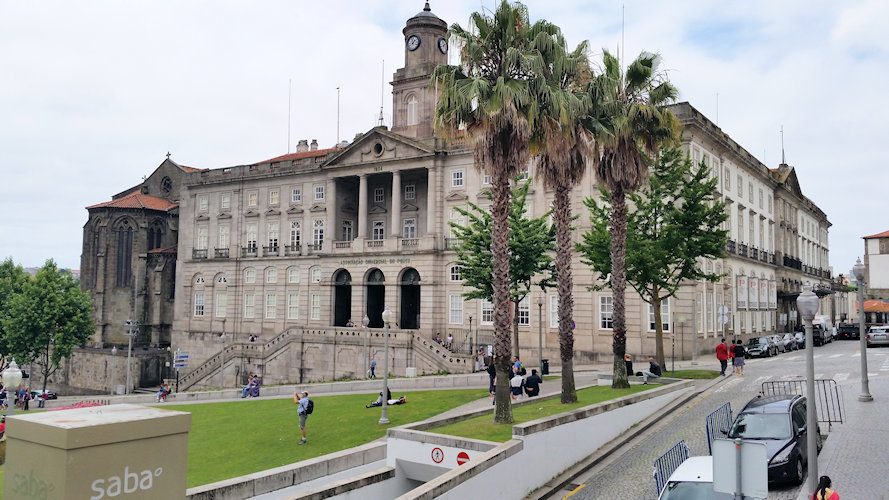

- The Palácio da Bolsa (Palace of the Stock Exchange), owned by Porto Commercial Association, on Infante D. Henrique Square in Porto, was built in 1834
- Le Palácio da Bolsa (Palais de la Bourse), propriété de l'Association commerciale de Porto, sur la place Infante D. Henrique à Porto, a été construit en 1834
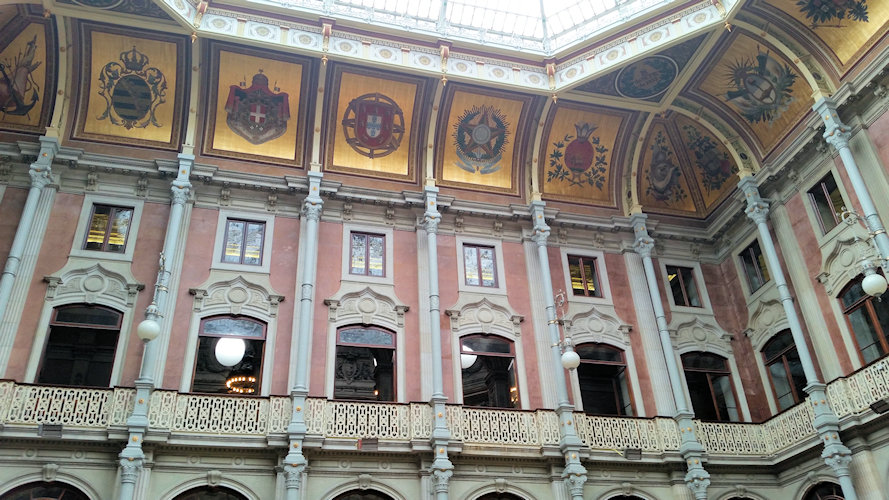

- The Court of Nations is a vast inner courtyard surrounded by galleries. Around 1880, it was covered by an imposing octagonal glass roof.
- La Cour des Nations est une vaste cour intérieure entourée de galeries. Vers 1880, elle a été recouverte d'une imposante verrière octogonale.
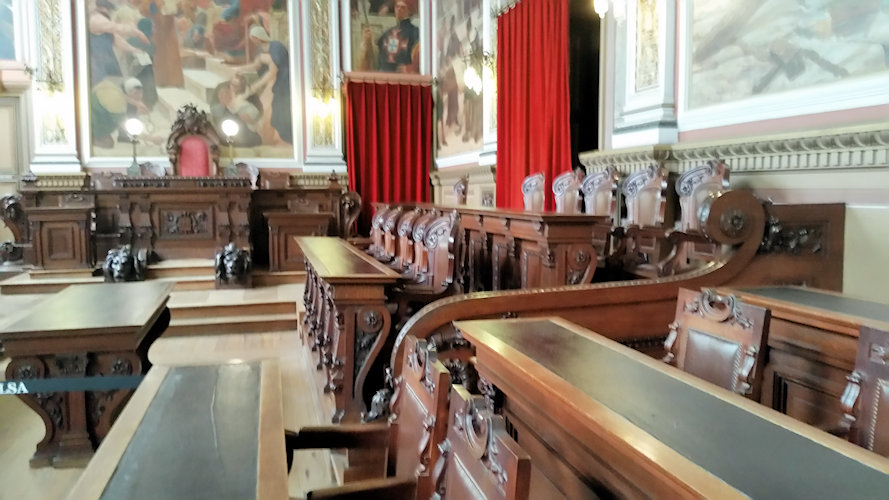

- The Hall of Solemn Hearings is the symbol of the arbitration renown acquired by the Porto Commercial Association in the world of commerce
- La salle des audiences solennelles est le symbole de la renommée de l'arbitrage acquise par l'Association commerciale de Porto dans le monde du commerce
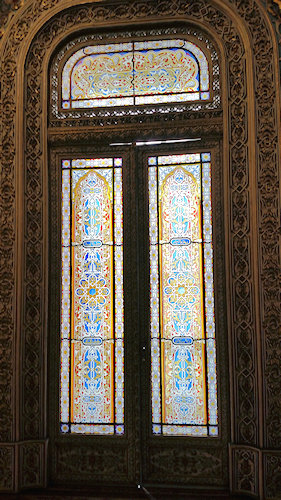

- The entrance door to the Moorish Salon in the Palácio da Bolsa
- La porte d'entrée du salon mauresque du Palácio da Bolsa
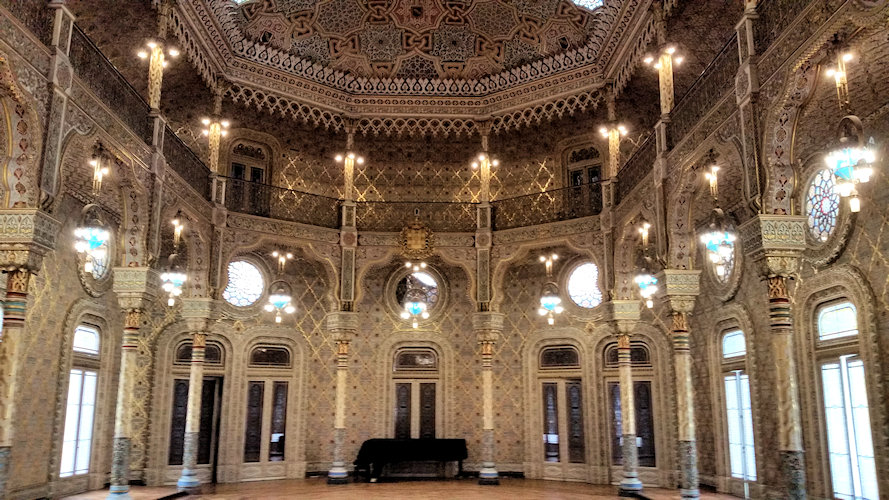

- The Moorish Salon is the jewel of the Palace. Built between 1862 and 1880, it is decorated in the neo-Moorish style, inspired by
motifs of the Alhambra of Granada.
- Le salon mauresque est le joyau du palais. Construit entre 1862 et 1880, il est décoré dans un style néo-mauresque, inspiré par
des motifs de l'Alhambra de Grenade.